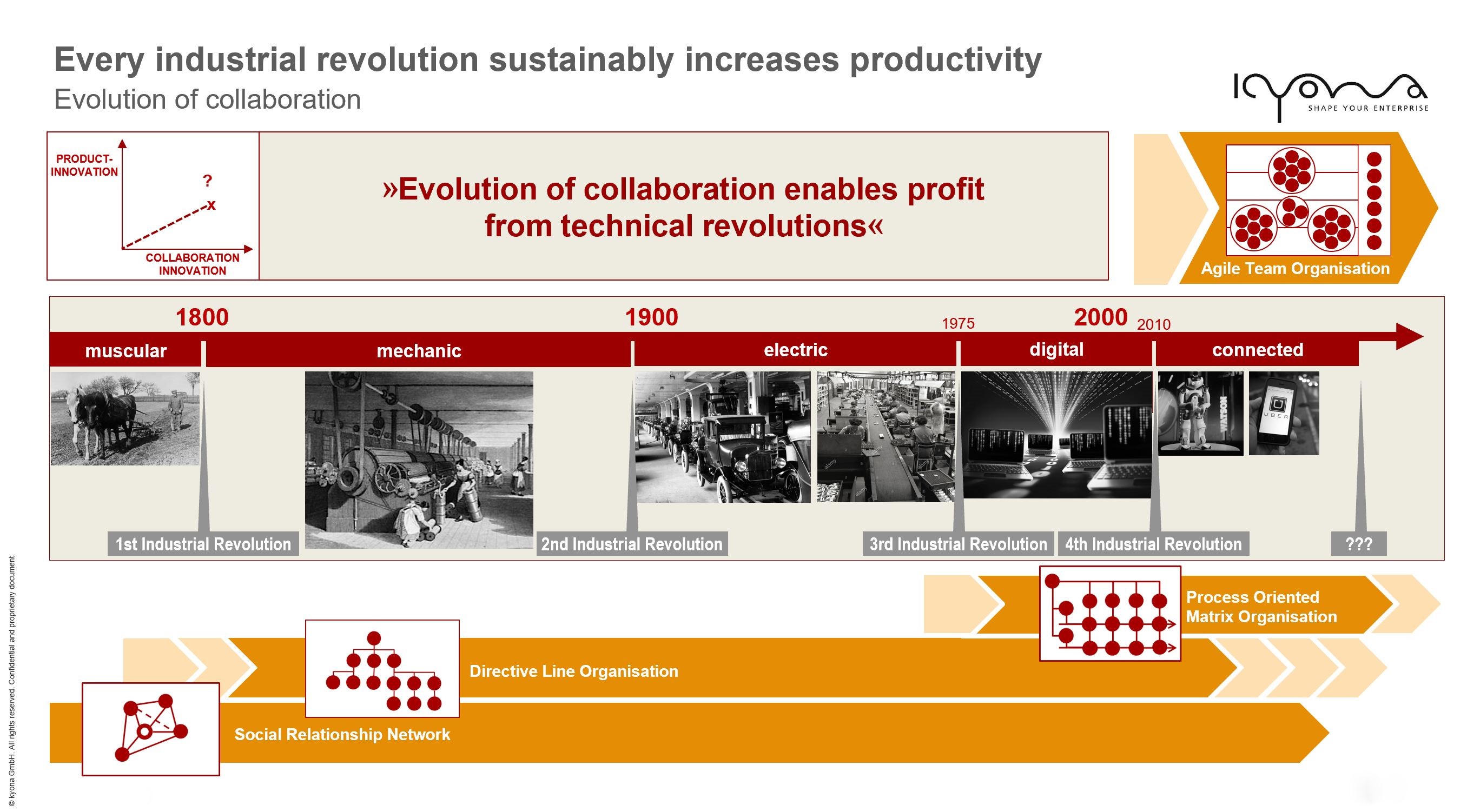The purpose of agility is to activate brainworkers and maximise EBIT
The term agility is increasingly mystified in discussions. Partial aspects are torn out and examined without context.
Those who present agility as a pure “mindset topic” misunderstand what ultimately is at stake.

“Agile is a mindset” – yes, that is certainly true, but not only that. At least in the manufacturing industry, a great deal of structure is needed to bring this agile mindset to life and change corporate cultures. “Managers must hand over power to employees” – oops, that sounds almost socialist… – no medium-sized entrepreneur or manager will “hand over power to employees”. This is certainly not a primary goal of agility. Is power from a hierarchical position possibly equated or even confused with leadership effect through competence in connected structures? That’s two pairs of shoes… Or else: “an agile company has a purpose, making money is a side effect” – oh yes, that’s right, that’s certainly the main reason why Apple sells the iPhone X in Germany for 1.250 € and does not offer it for about 450,- € – including a “cheeky 50% margin surcharge” on the (estimated) actual production costs…
Meanwhile, there are many different views on agility but there is nothing mystical about it. Companies are an association of people who create common benefits in the market. They do this by selling products and services with which their company generates turnover. From this cash flow, raw materials are paid for and the income of the individual participants is generated. If this principle does not work, the company does not work and disappears from the market unless it is a state-owned company. Of course, in the long run, this principle also applies here.
Agility for me is nothing more than an evolutionary stage of collaboration that enables an organisation to activate many employees, to think along with them, and to get fully involved in order to maximize profits. A healthy company that is well-positioned in the market and generates profits can not only pay its employees but also invest in innovation and satisfy investors.
On the other hand, it is well-known that every trend has a counter-trend (see Matthias Horx, The Megatrend Principle). Thus, it seems to be hip in current social media articles to acknowledge that the wave of agilization has already passed its zenith. I think that is clearly premature.
The need to subject collaboration to an evolutionary development arises from the development of our markets as a result of the achievements of four industrial revolutions Mechanisation, electrification, digitalisation and connectivity. The result to date has been fast-moving markets with more and more opportunities, in which increasingly complex products are traded.

The hierarchical structures of our companies have their roots in the 19th century. We work with top management, middle management, and employees according to organisational principles that were established when farmworkers were gushing into the factories on a massive scale and, with their previously learned skills of running behind horses and plowing the field. They had to suddenly cope with relatively complex factory jobs at that time.
These structures will at some point undergo an evolutionary revision in the course of the rather dramatic development of our society and in the direction of digitalisation and connectivity, which is not only obvious but a compelling consequence in adaptable organisations.
Therefore, it is also obvious that companies that are better organised in this way (like agile ) will eventually outstrip their development resistant competitors. This is why and only because of this Apple can sell its iPhone X at such a high price. And that’s why Nokia’s mobile phone division is far away from the window…
The development of digitization and connectivity is unstoppable. Even if some are trying to do so. At the beginning of the last century, there were also farmers who held on to a horse instead of getting a tractor. Does anyone still plough with a horse today?
If you want to be prepared for current and future markets, you cannot avoid dealing with the evolution of collaboration. And the latest thing here is agility. For agile organisations, the challenges of the VUCA world are a welcome distraction. Digitalization and networking are becoming an opportunity rather than a threat.
Agile Mindset is a very important component here. No question about it! Work is easier if we see a sense in it. An active co-thinker is not someone who, deep down in a hierarchy only does what he is told, but someone who finds a working environment that allows him to play a full part and bring his company forward in the competition. In order to achieve this, it is particularly important to make intensive use of the technical achievements of digitalization and connectivity. In larger, scaled agile working environments, these create the transparency that is absolutely necessary and thus the basis for alignment and cross-functional collaboration between many co-thinking people.
About the author:
Rainer Borg
After 10 years of consulting and development work in a large auditing and management consultancy and as the CEO of a start-up, Rainer Borg dedicated himself entirely to the topic of Scaled Agile Collaboration in organisational and product development.
With profound competence in Scaled Agile Enterprise architectures, he dimensioned agility from the individual team to the entire group of companies.
His passion is to accompany companies in their change, to initiate structures that enable the management to manage the complexity of change initiatives, and to master and control it. On the other hand, to enable employees to get involved and actively shape the company.
Photo credits:
Title: Maxime Lebrun 1520687 unsplash.com
Graphic: kyona GmbH
- April 21, 2019
- sirewp
- kyona GmbH



